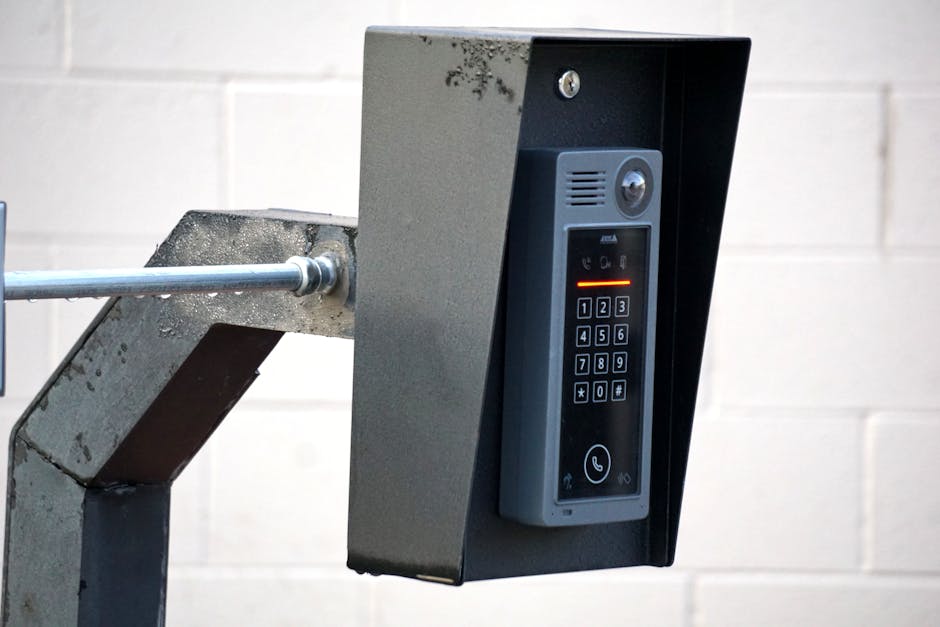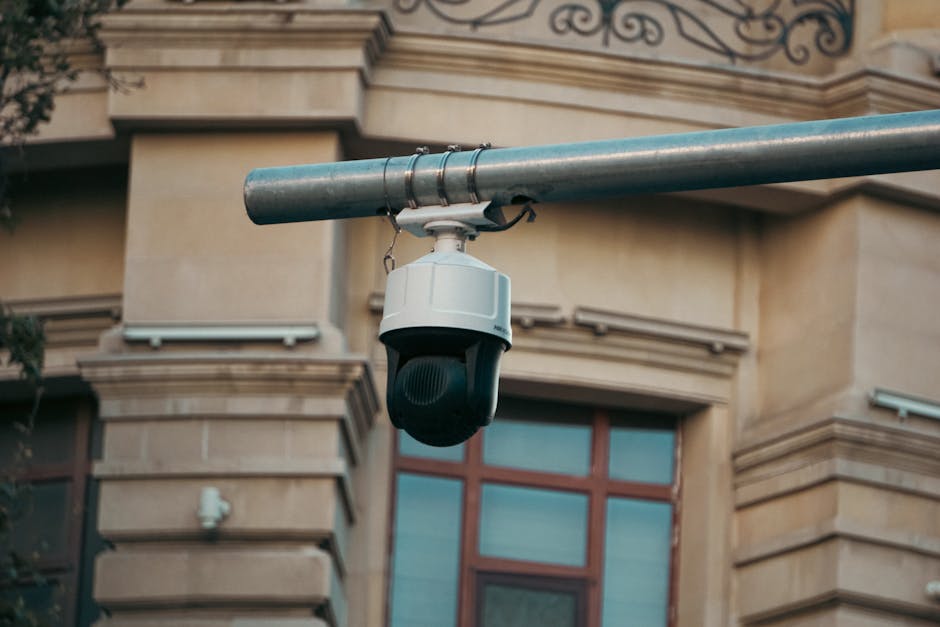Enhancing Workplace Security: The Complete Guide to Video Surveillance Systems
“In today's security-conscious business environment, video surveillance systems have evolved beyond simple monitoring tools into comprehensive security solutions. This guide explores how modern surveillance technology can enhance workplace security, protect valuable assets, and provide actionable insights while addressing privacy concerns and compliance requirements for corporate environments. ”

Enhancing Workplace Security: The Complete Guide to Video Surveillance Systems
In today's rapidly evolving business landscape, workplace security has become a top priority for organizations across all industries. Video surveillance systems have transformed from simple monitoring tools into sophisticated security solutions that provide comprehensive protection and valuable insights. For corporate HR managers, IT professionals, facility managers, and educational administrators, understanding the capabilities and implementation strategies of modern video surveillance is essential for creating safe, secure environments.

Understanding Modern Video Surveillance Systems
A video surveillance system is a network of cameras and software that monitors activity in public or private spaces. Unlike traditional CCTV systems that simply recorded footage for later review, modern systems leverage advanced technologies to provide real-time monitoring, analytics, and actionable intelligence.
Key Components of Video Surveillance Systems
Modern video surveillance systems consist of several critical components:
-
IP-Connected Cameras: Today's surveillance cameras connect to networks, allowing for remote access and management. These can include indoor cameras, outdoor cameras with weather resistance, and specialized models with features like pan-tilt-zoom capabilities.
-
Video Management System (VMS): This software serves as the central nervous system, allowing users to view, record, and manage video feeds. Advanced VMS platforms include features like user permission management and integration with other security systems.
-
Storage Solutions: Whether using Network Video Recorders (NVRs) or cloud-based storage, these components securely store footage for later review and evidence purposes.
-
Analytics Software: Modern systems incorporate artificial intelligence and machine learning to detect unusual activities, recognize faces, count people, and provide other valuable insights.

Benefits of Implementing Video Surveillance in the Workplace
Enhanced Security and Crime Prevention
The most obvious benefit of video surveillance is improved security. Visible cameras serve as deterrents to potential wrongdoers, while recorded footage provides evidence in case incidents do occur. According to security experts, organizations with well-implemented surveillance systems experience fewer security breaches and theft incidents.
Protection of Assets and Intellectual Property
Beyond physical security, surveillance systems help protect an organization's valuable assets and intellectual property. In environments where sensitive information is handled, cameras can monitor access to restricted areas and help enforce information security protocols.
Improved Operational Efficiency
Video surveillance isn't just about security—it can also provide insights that improve operational efficiency. By analyzing traffic patterns, identifying bottlenecks, and monitoring workflow optimization, organizations can make data-driven decisions to enhance productivity and space utilization.
Evidence for Incident Resolution
When incidents do occur, having video evidence is invaluable for resolution. Whether dealing with workplace accidents, policy violations, or security breaches, recorded footage provides objective documentation that can help resolve disputes and support insurance claims.
Implementation Strategies for Different Environments
Corporate Offices
In corporate environments, surveillance systems should balance security needs with employee privacy concerns. Focus camera placement on entry points, server rooms, and areas containing valuable equipment or sensitive information. Integration with access control systems creates a comprehensive security solution that monitors who enters specific areas and when.
Educational Institutions
Schools and colleges face unique security challenges that require thoughtful surveillance implementation. Cameras should cover entry points, hallways, and common areas while avoiding locations where privacy is expected (like restrooms and changing areas). Many educational institutions are now implementing advanced systems that can detect unusual behavior patterns and alert security personnel in real-time.
Manufacturing and Warehouse Facilities
In industrial settings, surveillance systems serve dual purposes: security and operational monitoring. Cameras can help prevent theft while also monitoring production processes, identifying safety hazards, and ensuring compliance with protocols. High-resolution cameras with wide-angle lenses are particularly useful in large warehouse spaces.

Privacy Considerations and Compliance Requirements
Balancing Security with Privacy
While surveillance is essential for security, it must be balanced with respect for privacy. Organizations should:
- Clearly communicate the presence and purpose of surveillance systems to employees and visitors
- Avoid placing cameras in areas where privacy is reasonably expected
- Limit access to surveillance footage to authorized personnel only
- Establish clear policies regarding footage retention and review
Legal and Regulatory Compliance
Video surveillance is subject to various laws and regulations that vary by location. In the United States, organizations must consider:
- State-specific privacy laws that may restrict surveillance in certain areas
- Federal regulations like HIPAA that protect sensitive information
- Industry-specific requirements for organizations in healthcare, finance, and other regulated sectors
Organizations operating internationally must navigate even more complex regulatory landscapes, including the European Union's GDPR, which places strict limitations on surveillance and data privacy.
Advanced Features and Technologies
Artificial Intelligence and Machine Learning
The integration of AI and machine learning has revolutionized video surveillance capabilities. Modern systems can:
- Detect unusual behavior patterns that may indicate security threats
- Recognize specific individuals through facial recognition
- Count people entering and exiting spaces for occupancy monitoring
- Identify objects left behind in secure areas
These capabilities transform passive recording systems into proactive security tools that can alert personnel to potential issues before they escalate.
Cloud-Based Surveillance Solutions
Cloud technology has transformed how surveillance systems store and manage footage. Cloud-based solutions offer:
- Scalable storage that grows with organizational needs
- Remote access to live and recorded footage from anywhere
- Automatic updates and maintenance
- Enhanced disaster recovery capabilities
For organizations with multiple locations, cloud-based systems provide centralized management and consistent security protocols across all sites.
Integration with Other Security Systems
Modern surveillance systems work best when integrated with other security technologies. Integration with access control systems, alarm systems, and emergency preparedness plans creates a comprehensive security ecosystem. For example, when an unauthorized access attempt occurs, the system can automatically begin recording at higher resolution while alerting security personnel.
Best Practices for System Management and Maintenance
Regular Audits and Updates
To maintain optimal performance, surveillance systems require regular audits and updates. Organizations should:
- Conduct quarterly reviews of camera positioning and coverage
- Update software and firmware regularly to address security vulnerabilities
- Test backup and recovery procedures to ensure footage is properly preserved
- Review user access permissions to prevent unauthorized viewing
Training for Security Personnel
Even the most advanced surveillance system is only as effective as the people managing it. Comprehensive training programs should cover:
- System operation and management
- Legal and ethical considerations
- Incident response protocols
- Proper handling of footage as evidence
Documentation and Policy Development
Clear policies regarding surveillance system use are essential for both legal compliance and operational effectiveness. Organizations should develop and maintain:
- Written surveillance policies that outline system purposes and limitations
- Documentation of camera locations and coverage areas
- Protocols for footage access, review, and retention
- Procedures for handling footage in case of incidents

Cost Considerations and ROI Analysis
Initial Investment vs. Long-Term Value
Implementing a comprehensive video surveillance system requires significant initial investment, but the long-term value often justifies the cost. When analyzing return on investment, organizations should consider:
- Reduced losses from theft and vandalism
- Lower insurance premiums due to enhanced security measures
- Operational efficiencies gained through system analytics
- Potential liability reductions from improved incident documentation
Scalability and Future-Proofing
Technology evolves rapidly, so organizations should select systems that can scale and adapt to future needs. Consider:
- Cameras and software that can be upgraded rather than replaced
- Open architecture systems that integrate with new technologies
- Flexible storage solutions that can expand as needs grow
- Subscription-based services that include regular updates and improvements
Conclusion: Creating a Comprehensive Security Strategy
Video surveillance systems are a critical component of modern workplace security, but they're most effective when implemented as part of a comprehensive strategy. By combining surveillance with access control, employee training, and clear security policies, organizations can create safe, secure environments that protect people, assets, and information.
For HR managers, IT professionals, facility managers, and educational administrators, understanding the capabilities, limitations, and best practices of video surveillance is essential for making informed security decisions. By implementing thoughtfully designed systems that balance security needs with privacy considerations, organizations can enhance protection while maintaining positive workplace environments.
As technology continues to evolve, video surveillance systems will offer even more sophisticated capabilities for threat detection and analysis. Organizations that stay informed about these developments and adapt their security strategies accordingly will be best positioned to address emerging challenges in workplace security.